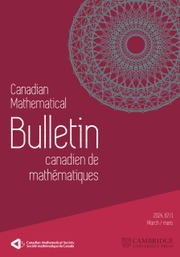Crossref Citations
This article has been cited by the following publications. This list is generated based on data provided by Crossref.
Barman, Rupam
Mahanta, Pankaj Jyoti
and
Singh, Gurinder
2025.
Hook length inequalities for t-regular partitions in the t-aspects: Part II.
Research in Number Theory,
Vol. 11,
Issue. 4,













